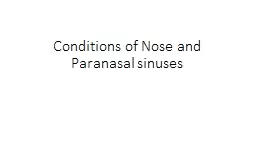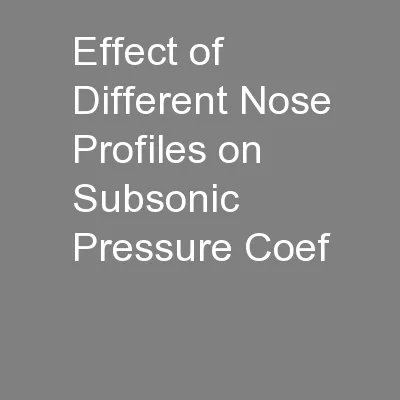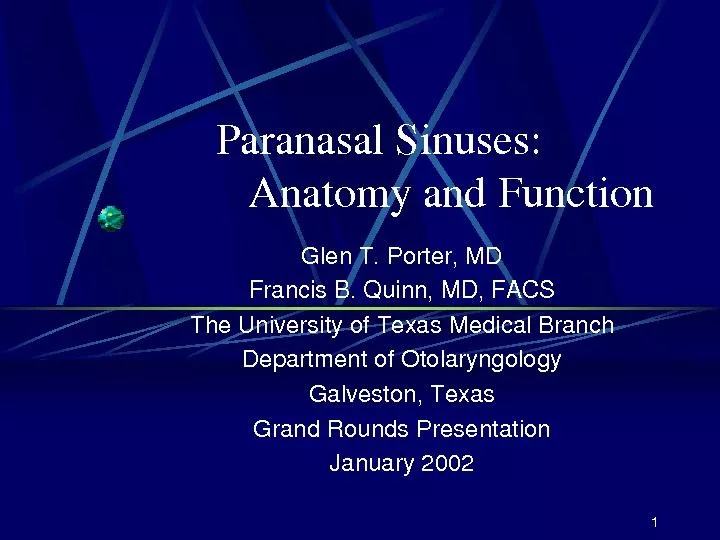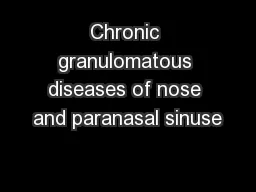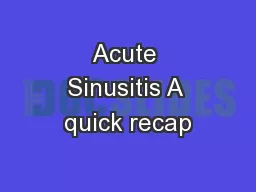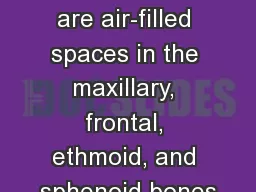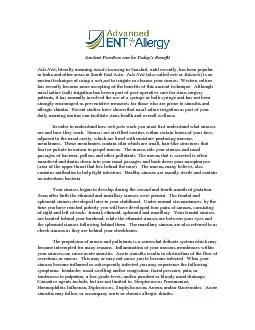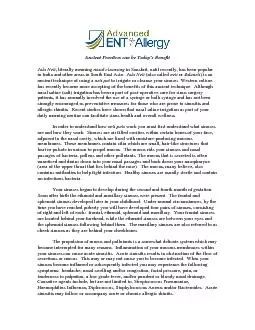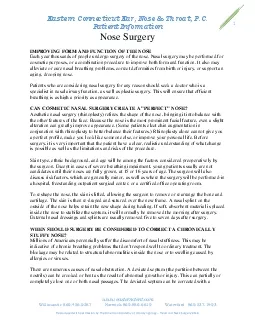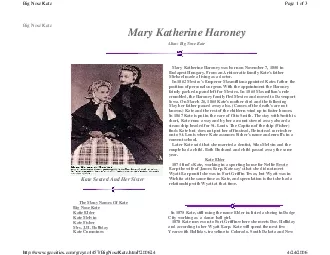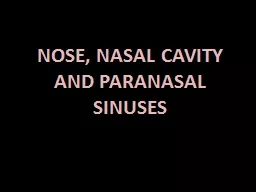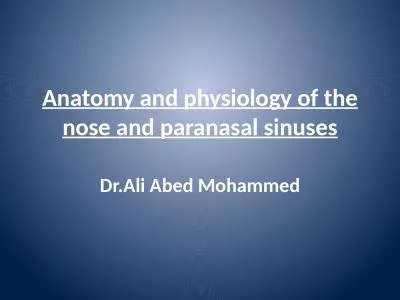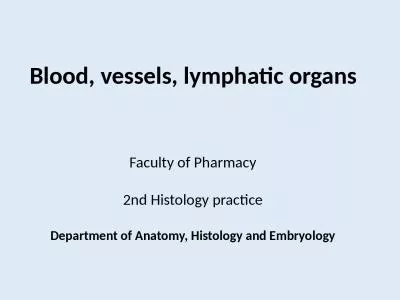PPT-Conditions of Nose and Paranasal sinuses
Author : keywordsgucci | Published Date : 2020-06-15
Choanal atresia Results from persistence of buccopharyngeal membrane Severity of presentation depends on whether unilateral or bilateral bilateral atresia presents
Presentation Embed Code
Download Presentation
Download Presentation The PPT/PDF document "Conditions of Nose and Paranasal sinuses" is the property of its rightful owner. Permission is granted to download and print the materials on this website for personal, non-commercial use only, and to display it on your personal computer provided you do not modify the materials and that you retain all copyright notices contained in the materials. By downloading content from our website, you accept the terms of this agreement.
Conditions of Nose and Paranasal sinuses: Transcript
Download Rules Of Document
"Conditions of Nose and Paranasal sinuses"The content belongs to its owner. You may download and print it for personal use, without modification, and keep all copyright notices. By downloading, you agree to these terms.
Related Documents

